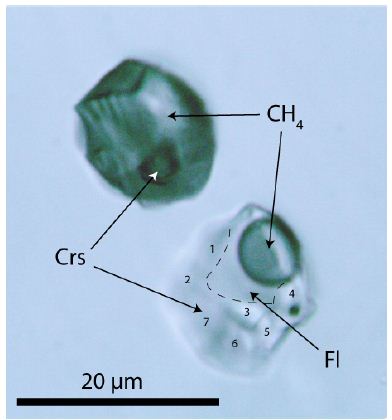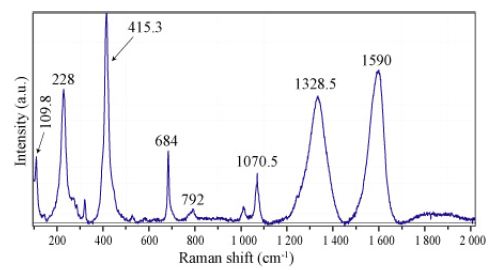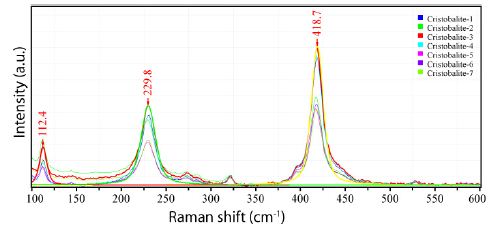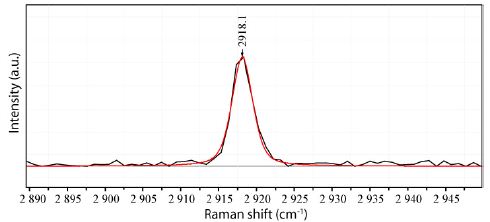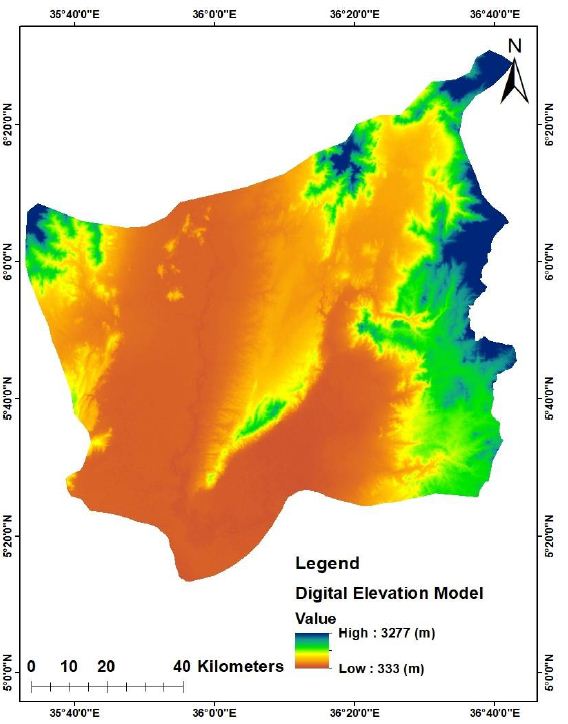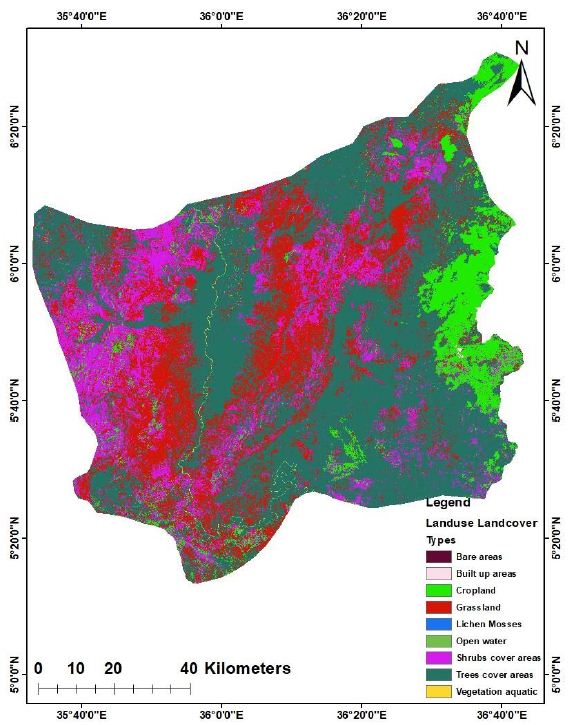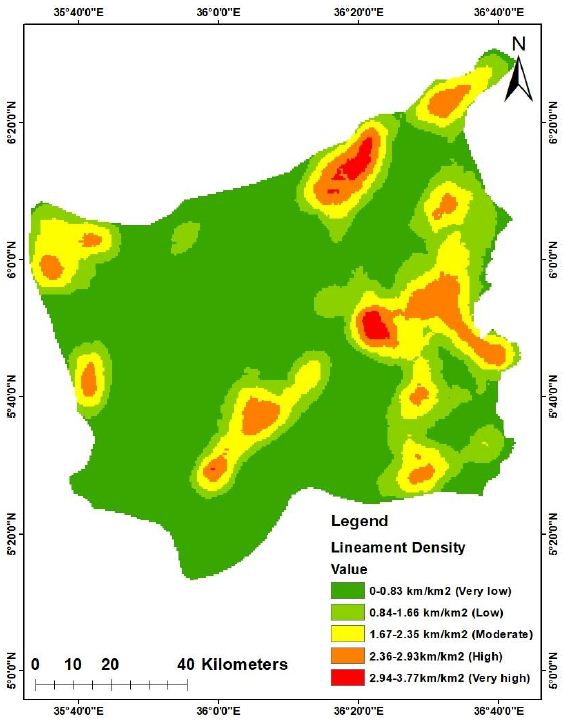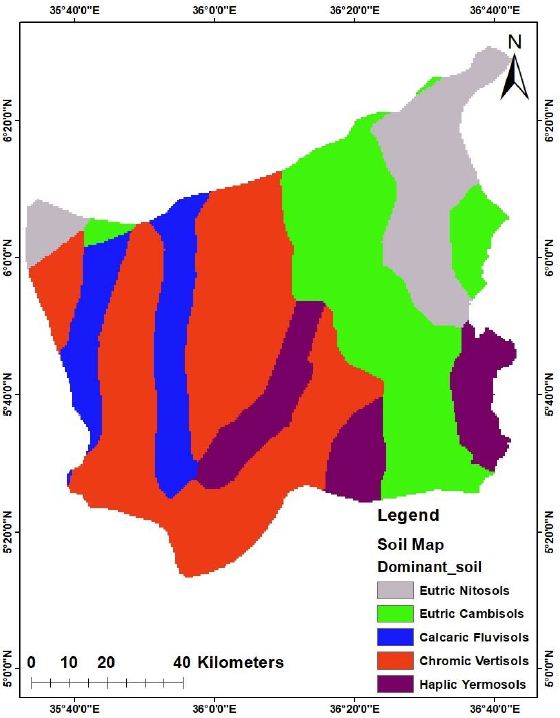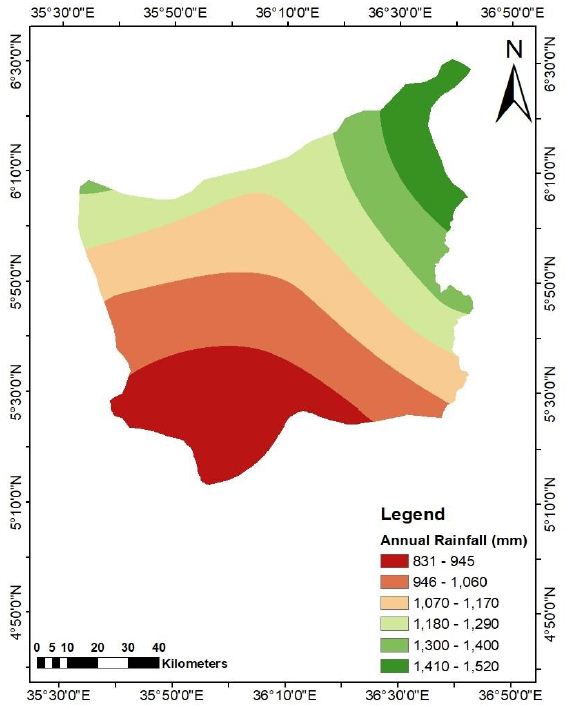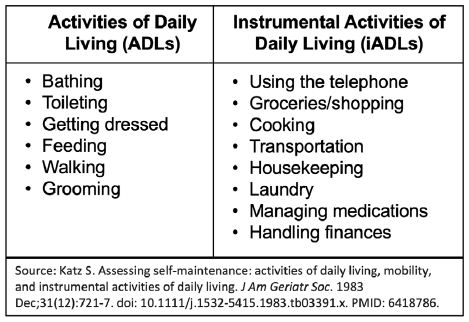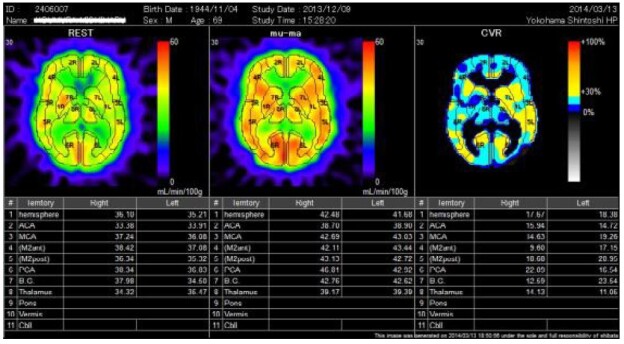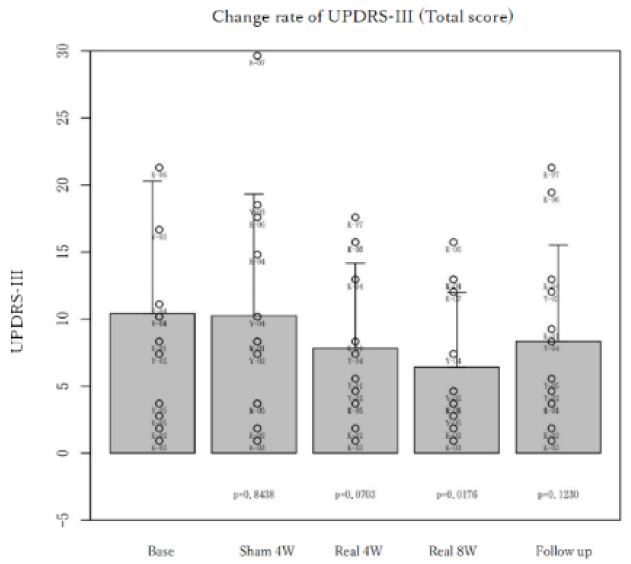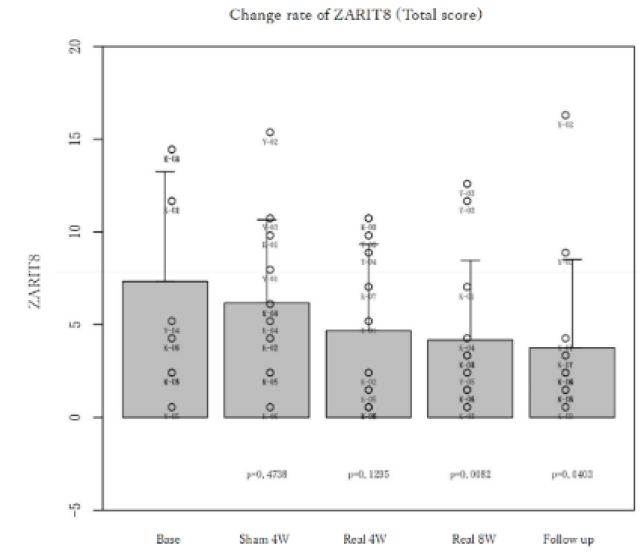DOI: 10.31038/PSYJ.2023561
Abstract
The study sought to determine the amount of originality of secondary school instructors in Israel’s northern region, as seen by principals and teachers. The descriptive approach was employed, and data was collected using a tool after establishing its validity and reliability. The tool was a questionnaire designed to assess the level of creativity of secondary school teachers in Israel’s northern region, and it included three domains: (originality, flexibility, and fluency). After (400) electronic questionnaires were disseminated to the study population in a basic random manner, the available sample for the study consisted of (266) principals and teachers. The study’s findings revealed that the level of creativity among secondary school teachers in Israel’s northern region was average, and there were statistically significant differences in the study sample’s estimates of the level of creativity among teachers due to the effect of the gender variable in favour of females, and there were no statistically significant differences. Because of the influence of the factors qualification and experience. The study recommended that principals be encouraged to create a safe school environment free of conflict because it has a positive effect on increasing teacher creativity, giving principals more freedom in running their schools, and easing the burdens on teachers to increase their creativity.
Keywords
Creativity, School principals, Teachers, The Northern Region in Israel
Introduction
Institutions today are characterized by an unstable state, as they are open social activities that interact with the environment in which they live, with characteristics such as: growth, expansion, and diminishing spatial and temporal boundaries and boundaries, in light of rapid technical changes, and the rapid diversity and complexity of operations, and the intensity of competition over resources. Educational institutions at various levels are considered part of society, in which individuals are an essential component, and the presence of humanity in any institution dictates a number of complex internal and external relations to achieve its goals, as well as the exchange of experiences in it, and from these relations cases of differences and contradictions that must be managed arise. It is prudent to resolve and terminate it so that it does not interfere with the running of the institution and so impede its attainment of its objectives. In educational institutions that seek competition and change, the importance of creativity has increased in recent years, as it is reflected in the creation of new ideas in the educational process, as well as the creation of original ideas that are far from the traditional context in thinking, as well as the development of teaching methods, methods, and means that enable the transformation of these ideas into reality. Students, teachers, school administration, and society benefit from practical, productive, and beneficial value [1]. Creativity results from igniting instructors’ desire to work and motivating them to exert effort, effective engagement in work and performance, and shouldering responsibilities in order to realize the educational institution’s goals. As a result, job creativity benefits both the teacher and the school community.
Ciltas [2] confirms that the teacher’s creativity is closely related to the ability to imagine, because the teacher with the highest level of creativity successfully participates with his students physically and mentally in the various activities, and he can move away from the familiar or usual methods of teaching, and he also uses modern tools. new ways and ideas. Abd al-Rahman and al-Khatib [3] agree that the teacher is an important component of the educational system. The teacher with creative abilities is charged with growing students’ creative abilities since he is the one who increases creative thinking skills with his questions and is also capable of arousing students’ curiosity, and he is the teacher. The adaptable one who turns educational content into activities that encourage student creativity and is in charge of establishing an incubation atmosphere for creativity.
The success of the teaching-learning process is heavily dependent on successful management, as represented by the school principal, and the skills and capabilities he possesses that assist him in managing the school as an educational leader who influences all of its employees, and has the ability to neutralize conflicts and transform them into positive opportunities that support the educational process, and works to draw the way for individuals, and the coordination of their efforts. Furthermore, one of the most essential educational inputs in the success of the educational process is the teacher. Tafvlin [4] emphasized its significance to individuals interested in education by emphasizing that the success of the educational process and attainment of its goals are heavily reliant on the creative teacher who believes in his vocation. The Arab education system in Israel is facing unique political, economic, and social challenges, which are reflected in the performance of all components of the educational process in Arab schools. School principals, like the rest of those components, are impacted by the policies that are imposed on them, and the vast majority of them have not received any kind of training in diagnosing organizational conflict in their schools or how to effectively manage it, and all of their skills are the result of their experience, efforts, and personal characteristics [5]. Furthermore, the impact of the tough conditions that the Arab school system faces extends beyond principals to instructors. Teachers are dissatisfied with these plans, according to Arar and Al-Hajj [6], because of the psychological demands they put on them, which may influence their levels of creativity.
Statement of the Problem and Questions of the Study
For educational institutions to attain their targeted educational goals—which should be in step with contemporary and accelerated changes—teaching staff innovation is essential. The researcher came up with the idea for this study, which examined the degree of teachers’ creativity, as a result of working in secondary schools in Israel’s northern region and responding to the questions below:
- From the perspectives of administrators and teachers, what is the level of originality of secondary school instructors in secondary schools in the northern region of Israel?
- Are there statistically significant differences between the responses of the study sample regarding the degree of creativity of secondary school teachers in the northern region of Israel as a result of the influence of the variables (sex, educational attainment, experience, and job title) at the significance level (α=0.05)?
Purpose of the Study
The study aimed to accomplish the following goals:
- Exposing the degree of creativity of secondary school teachers in the northern region of Israel in order to enhance their role in the interest of the school and boost the level of creativity.
- -Outlining the variations in the study sample’s responses regarding the creativity of secondary school teachers in Israel’s northern region in accordance with the variables of the intermediate study in order to determine the reasons for these variations and address them in a way that enhances teachers’ levels of creativity.
- -Making the creativity of secondary school instructors in Israel’s northern region public in order to raise standards, build on areas of strength, and address areas of weakness.
Significance of the Study
The theoretical significance of the current study stems from its expansion of earlier research that examined the creative variable. It represents a fresh addition to the Arab library in terms of enhancing it with new theoretical material from its perspective, which deals with the variable in secondary schools in the northern part of Israel.
The outcomes of the current study, the methods utilized to get the data, and the suggestions that will be made in light of those conclusions have all given it practical significance. The researcher anticipates that the following individuals will gain from its findings and suggestions:
- The Ministry of Education’s decision-makers and educational policy-makers to determine the level of creativity among instructors.
- Supervisors of education at the Ministry of Education.
- Secondary school teachers.
- Researchers, graduate students, and those with an interest in societal variables.
Review of the Related Literature
In order to keep up with change, speed, and openness to different cultures, it is crucial to use one’s mind and invest it wisely. This calls for attention to creative minds who are able to find solutions to many problems that arise. The current era is characterized by an information and technological revolution, rapid changes, and multiple developments in all areas of life. It endangers both individuals and society and hinders society’s ability to stay up with changes and apply knowledge to a variety of occupations, making the need to foster creativity imperative [7]. There is a direct connection between instruction and the growth of creativity. It is the responsibility of the teacher to foster creativity in the students, and it is the responsibility of the creators to advance society. As a result, it is impossible to distinguish between the desire to promote holistic social development and the interest in teaching and nurturing creativity. Thus, the teacher’s responsibility for the growth, instruction, and development of creativity. No matter how excellent and well-rounded the school curriculum is, if it is being applied by a teacher who is unqualified for the job, it will not work. The educator drives change and directs the educational process towards the growth of creativity. The employment of contemporary teaching approaches that facilitate dialogue and interaction, stimulate initiative and uniqueness, and welcome student viewpoints and ideas is what fosters creativity in the classroom [8].
In his definition of creativity, Ayoub [9] said that creativity is “the individual’s ability to produce, characterized by the greatest amount of intellectual fluency, spontaneous flexibility, originality, and far-reaching repercussions, in response to a problem or an exciting situation.” It is also known as “the ability to generate innovative and useful ideas, and to provide solutions to everyday problems and challenges,” according to Phillip [10].
The Elements that Make Creativity
The researchers disagreed on the exact number of components that make up creativity, but they did agree on the following, which is what is presented here [11,12]:
A Feeling of the Problem
This is regarded as the most crucial component of creative thinking, and it entails properly articulating the issue, as well as appreciating its scope, dimensions, and effects.
Fluency
Fluency is the capacity to generate the greatest amount of solutions to an issue with the greatest speed and ease.
Flexibility
This refers to the capacity to alter one’s mental state in response to a change in circumstance. Flexibility is the variety or distinction of ideas that the creative person generates. Spontaneous or automatic flexibility is regarded as a manifestation of flexibility and is defined as the person’s capacity to respond to a certain stimulus or stimuli with the greatest number of ideas.
Originality
This refers to a person’s departure from conventional modes of thought and exploration of novel concepts. The desire to create something new or different as a result of being dissatisfied with the current quo is what leads to originality. The process of being original can be broken down into the following steps: defining the idea, concept, or problem, referring to it in more detail or for clarification, coming up with new ideas that are based on the concept and describing them verbally or using educational tools, developing newly acquired intellectual processes, and evaluating the effectiveness of those processes.
Expansion and Elaboration
This refers to expanding the current primary forms, adding new elements and components, and providing as many results as is conceivable for any given person.
Analysis and Linking
Analysis is the capacity to break down a thing or matter into its constituent parts or primary parts and then isolate these parts from one another in order to comprehend and realize the significance and function of each part as well as the relationship between the parts. The ability to recombine these pieces in a way that makes it easier to analyses them and derive conclusions based on the structure of the links between them is what is meant by the term “connection.”
Risk
It entails taking the initiative to adopt novel concepts and procedures and look for solutions.
Creativity
Creativity was explained through a group of theories, which varied according to different schools and trends. The researcher presents some of these theories as follows:
First: The Theory of Research and Excellence
- This theory is attributed to Peters & Waterman [13], who indicated in their book, In search of Excellence, that the common values and principles of creativity are the following:
- Desire and motivation for achievement, always giving precedence to action, and initiating performance more than just spending a lot of time thinking and analyzing.
- Developing relationships and links with the beneficiaries of the service from the institution, with the aim of getting to know them and benefiting from their suggestions.
- Promoting and achieving the concept of productivity, by developing the capabilities of all employees in the organization, with dignity and humanity, and encouraging their spirit of adventure and creativity.
- Simplifying procedures and administrative levels by relying on a few of them, and tending permanently to reduce leadership positions.
Second: Creative Thinking Theory
This theory is attributed to Edward De Bono [14], and it is named after the six hats. It relies on mental attitudes called parallel thinking, where everyone thinks about them in one way or one approach. De Bono divided the colors of the six hats as follows:
- The white hat: It is responsible for collecting information, knowing the current situation and the surrounding problems and circumstances, and it represents the objective view of things.
- The red hat: It is related to feelings, meaning that the person who wears it only says what he feels about a suggestion without giving reasons, as it is related to emotion, intuition, and instinctive thinking.
- The green hat: It represents providing creative ideas, alternatives, options and possibilities, and it is often responsible for suggestions and creative thinking.
- The blue hat: Its main task is to assist in controlling, determining capabilities, and anticipating results, in other words, controlling the thinking process.
- The yellow hat: It is responsible for logic, benefits, and showing the value of things, that is, it represents positive logic.
- The black hat: It is the hat of pessimism and caution, in which problems and weaknesses are assumed in the subject being researched, and it represents negative thinking.
The Six Hats method has been widely accepted, due to its ease of application, as it changes the prevailing way of thinking in meetings, and it takes a pattern (with or against), so that it becomes possible for the participants to establish a constructive dialogue among themselves.
- Al-Enezi [15] classified levels of creativity as follows:
a. Creativity at the Individual Level
It is the creativity achieved by individuals who have creative abilities and attributes, and they are usually characterized by innate creative features, such as: knowledge, education, and intelligence, which is represented in the ability to form flexible relationships between things, and personality, where the creative person is characterized by a spirit of risk, independence, perseverance, motivation, and openness. And childhood, which is usually characterized by diversification, and social habits that are characterized by interaction and exchange of opinions with others.
b. Creativity at the Community Level
It is the creativity that is presented or reached by the group, and the creativity of the group is usually greater than the individual sum of the creativity of its members, and this type of creativity is characterized by the following characteristics:
- A mixed-sex group produces better solutions than a single-sex group.
- A highly diverse group produces better solutions, and a creative team solution requires that it be made up of people with different personalities.
- A cohesive group is more willing or motivated to work than a group that is less cohesive.
- The members of a harmonious group are more inclined to creativity than the group whose members are not in harmony.
- The newly formed group tends to be more creative than the old group.
- Creativity increases with the increase in the number of members of the group, as capabilities, knowledge and skills expand.
c. Creativity at the Enterprise Level
It is the comprehensive and integrated creativity at the level of the organization so that it dyes it and makes it a distinct distinguishing mark in itself from others, as they are distinguished organizations in the level of their performance and work, and the work of these organizations is often typical and ideal for other organizations, and this level of creativity is carried out according to the following conditions:
- The need to realize that creativity and leadership need people with deep thinking, which requires that the institution provide individuals with learning and training opportunities.
- The need to learn to solve problems in a creative way, and this means adapting thinking to be more flexible.
- The need to develop and enhance creative skills and capabilities related to finding problems, getting used to absolute and comprehensive thinking, and exploring the dimensions of any situation.
- The need to develop creative skills in creating problems or building problems.
d. Creativity in Educational Institutions
The school plays a major role in developing creativity among students, as it is the second environment – after the family – in which students spend a long period of time. Creative, which reflects positively on his performance by providing a climatic environment capable of showing creative people, as well as paying attention to various activities related to the development of their creative thought.
The creative teacher, with the culture and positive attitudes he carries towards his profession, works to nurture creativity among students, relying on his understanding of creativity, his awareness of its dimensions, and his ability to discover creative people and follow them in the creative process. And because teaching methods have a great role in nurturing creativity, it is necessary that these methods meet the development of students’ desire for self-learning, the development of their thinking abilities, the development of communication and leadership skills, the promotion of teamwork spirit, and the development of an emotional social classroom climate..
The researcher concludes that the school in the modern era requires an additional effort from the school principal, in order for the school administration to take creative paths, through planning and setting goals, or defining appropriate procedures for implementation and follow-up, and this is through participation, discussion and various and different meetings inside and outside the school, with the aim of achieving The goals of the educational institution that he heads, as well as delegating powers to those working with him in the school to share with him the responsibility, and to carry out the school’s burdens and supervise it, so that there is a commitment to implementing these goals.
Empirical Literature
Nasser’s study [16] aimed to identify the level of creative behavior among teachers in public schools in Israel. The sample of the study consisted of (502) male and female teachers, who were chosen by a simple random method. The study used the descriptive survey method, and the questionnaire as a tool for the study. The results showed that the level of creative behavior among teachers was high, and there were statistically significant differences due to the effect of the gender variable in favor of males, and the effect of the educational qualification variable in favor of bachelor’s holders, and the effect of the variable years of experience in favor of the “ten years or less” category.
Al-Qahtani’s study [17] aimed to identify the level of Islamic education teachers’ practice of creative thinking skills from the point of view of their students and its relationship to the variables of gender and the type of department (scientific, literary). The study used the descriptive survey method, and the questionnaire was used as a tool for the study. The study sample consisted of (365) male and female students who were randomly selected from Kuwaiti schools. The results showed that the level of Islamic education teachers’ practice of creative thinking skills in secondary schools in Kuwait was high, and there were no statistically significant differences due to the effect of the gender variable, and there were statistically significant differences due to the effect of the type of department variable, in favor of science students.
Marzuki & Lampuasa [18] conducted a study aimed at identifying the role of school principals in developing the motivation of English language teachers. The study used a descriptive approach based on a case study, as the study was applied in Azhar-Palu High School in Indonesia. The results showed that the most effective methods for developing teachers’ creativity are, in order: involving teachers in designing school programs and educational activities, adopting a fair policy in evaluation and providing incentives, and activating the supervisory role of course coordinators.
The study of Al-Issa [19] aimed to identify the role of basic school principals in the upbringing of Mafraq in developing the creative energies of teachers from the teachers’ point of view, and the impact of the variables of gender, experience, and educational qualification on the estimates of the study sample. The descriptive survey method was used, and the questionnaire was a tool for data collection, and the study sample consisted of (199) male and female teachers, who were selected using a simple random method. The results of the study showed that the role of principals of basic schools in Mafraq Education in developing the creative energies of teachers from the teachers’ point of view was high, and that the level of creativity among teachers was high, and there were no statistically significant differences about the level of creativity of teachers due to the variables of gender, experience and qualification.
The study of Adigüzel & Okçu [20] investigated the relationship between the school organizational climate and the level of teachers’ creativity. The study used the correlative descriptive method, and the study sample consisted of (756) male and female teachers who were chosen by the random cluster method from secondary schools in Turkey, and the questionnaires were used as data collection tools. The results showed that the level of the organizational climate was average, and that the level of teachers’ creativity was average, and that there was a correlation between the organizational climate and teachers’ creativity. The results also showed that there were statistically significant differences due to the effect of the gender variable in favor of males, and to the effect of the experience variable in favor of the “more than ten years” category.
The study of Ziada [21] aimed to identify the role of secondary school principals in Zarqa Al-Awwal Education in providing the requirements of a culture of creativity from the teachers’ point of view and its relationship to the variables of gender, years of experience, and academic qualification. The descriptive survey method was used, and the questionnaire was used as a data collection tool. The study sample consisted of (342) male and female teachers, who were selected using a simple random method. The results showed that the role of secondary school principals in the first Zarqa Education in providing the requirements of the culture of creativity from the point of view of teachers came to a medium degree, and there were no statistically significant differences due to the effect of gender and academic qualification, and there were statistically significant differences due to the effect of years of experience in favor of less than 5 years.
Method and Procedures
The descriptive correlational approach was used to identify the degree of practice of secondary school principals in the northern region in Israel strategies for managing organizational conflict and the level of creativity of teachers in those schools from the point of view of principals and teachers, as well as the correlation between them, due to the suitability of this approach to achieve the objectives of the current study. He is interested in studying the reality or phenomenon as it exists in reality, and as an accurate description that expresses it qualitatively or quantitatively, so that it gives a numerical description that shows the amount or size of this phenomenon.
Participants and Variables of the Study
The study population consisted of all the principals and teachers of secondary schools in the northern region inside Israel, which numbered (750) male and female teachers, working in (25) secondary schools, according to the human resources statistics of the Ministry of Education for the academic year 2022-23.
In order to select the study sample, (400) electronic questionnaires were distributed to the entire community of principals, and (375) teachers were chosen by the simple random method. Teachers, and accordingly the study sample consisted of (266) principals and teachers, who were chosen by the available method, with a rate of approximately (35.4%) of the study population. Table 1 shows the distribution of the study sample according to the intermediate variables (sex, educational qualification, experience, and job title).
Table 1 shows that 33.1% (number=88) of the study sample were males, and 66.9% (number=178) were females. 17.3% (number=46) of bachelor’s degree holders or less, and 82.7% (number=220) of graduate students. 33.5% (n=89) had experience of less than 10 years, and 66.5% (n=177) had experience of 10 years or more. 90.6% (n=241) were teachers, and 9.4% (n=25) were principals.
Table 1: The sample was distributed according to the intermediate variables

Results of the Study
This chapter deals with a presentation of the findings of the study, which aimed to reveal the level of creativity of secondary school teachers in the northern region inside Israel, as follows:
The results related to the answer to the first question, which states: “What is the level of creativity of secondary school teachers in the northern region inside Israel from the point of view of principals and teachers?”
To answer this question, the arithmetic means and standard deviations of the study sample’s estimates of the creativity level of secondary school teachers in the northern region in Israel were calculated from the point of view of principals and teachers, and Table (15) shows this (Table 2).
The results related to table (15) show that the arithmetic mean of the estimates of the study sample for the fields of creativity combined is (3.38) and the standard deviation is (0.83) at an average level, and the arithmetic means for the fields of creativity ranged between (3.26) and (3.46) at an average level, where the estimates of the field of flexibility came in the first rank With an arithmetic mean (3.46) and a standard deviation (0.93) at an average level, the estimates for the field of fluency came in the second rank with an arithmetic mean (3.43) and a standard deviation (0.89) and at an average level. The arithmetic means and standard deviations of the study sample’s estimates on the areas of creativity were calculated separately, and tables 16 to 18 show this.
Table 2: The arithmetic means and standard deviations of the study sample’s estimates for the fields of creativity

Table (16) shows the arithmetic means and standard deviations of the study sample’s estimates in the field of resilience (Table 3).
The results related to table (16) showed that the total arithmetic mean of the estimates of the study sample for the field of flexibility was (3.46) and the standard deviation was (0.93) at an average level, and the arithmetic means for the field of flexibility ranged between (3.39) and (3.53) at an average level, as paragraph (13) came Its text “takes the initiative to adopt new ideas” ranked first, with an arithmetic mean (3.53) and a standard deviation (1.08), at an average level, while paragraph (12) and its text “accepts unfamiliar job tasks” came in the last rank, with an arithmetic mean (3.39) and a standard deviation (1.10). , and at an average level.
Table 3: Arithmetic means and standard deviations of the study sample estimates in the field of flexibility

Domain of Fluency
Table (17) shows the arithmetic means and standard deviations of the study sample’s estimates in the field of fluency (Table 4).
The results related to table (17) showed that the total arithmetic mean of the study sample’s estimates for the field of fluency was (3.43) and the standard deviation was (0.89) at an average level. “Innovates solutions to deal with problems” ranked first, with an arithmetic mean (3.56) and a standard deviation (0.96), and an average level, while paragraph (19) and its text “avoids routine teaching methods” came in the last rank with an arithmetic mean (3.28) and a standard deviation (1.04), And at an average level.
Table 4: Arithmetic means and standard deviations of the study sample estimates in the field of fluency

Domain of Originality
Table (18) shows the arithmetic means and standard deviations of the study sample’s estimates in the field of originality (Table 5).
Table 5: Arithmetic means and standard deviations of the study sample estimates in the domain of originality

The results related to table (18) showed that the total arithmetic mean of the study sample’s estimates for the field of originality was (3.26) and the standard deviation was (0.82) at an average level. Its text “employs the experiences of others in solving the problems it faces” ranked first, with an arithmetic mean (3.41) and a standard deviation (1.00), at an average level, while paragraph (3) and its text “answers questions in an unfamiliar way” came in the last rank with an arithmetic mean (3.14). And a standard deviation (0.94), at an average level.
The results related to the answer to the second question, which stated: “Are there statistically significant differences at the level of significance (α=0.05) in the responses of the study sample about the creativity level of secondary school teachers in the northern region inside Israel due to the effect of the variables (Gender, educational qualification, experience, and job title)?”
To answer this question, the arithmetic means and standard deviations of the study sample’s estimates about the creativity level of secondary school teachers in the northern region in Israel were calculated, according to the intermediate variables, and Table (19) shows that (Table 6).
Table 6: The arithmetic means and standard deviations of the study sample’s estimates about the creativity level of secondary school teachers, according to the intermediate variables.
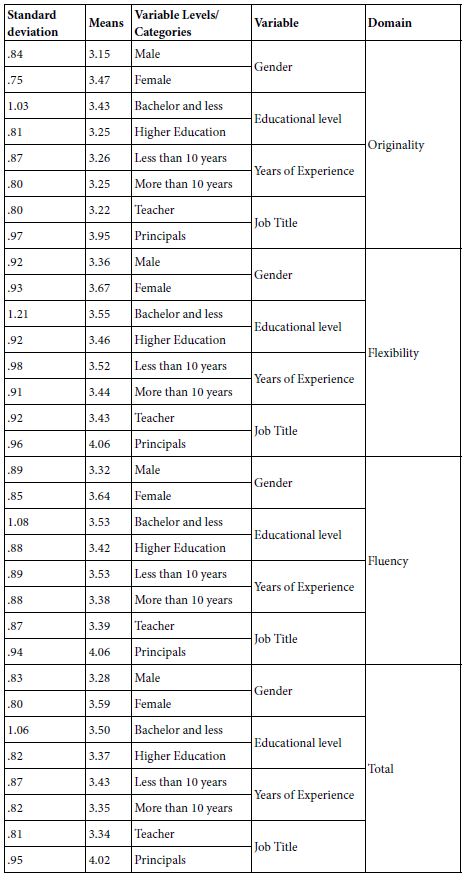
The results related to table (19) showed that there are apparent differences between the arithmetic means of the study sample’s estimates about the level of creativity of secondary school teachers in the three domains and the totality, according to the intermediate variables.
To determine the statistical significance of the differences between the arithmetic averages of the study sample’s estimates about the level of creativity of secondary school teachers in the three domains (linear combination), according to the intermediate variables, four-way MANOVA was used, using the Hotelling’s Trace test, and the table (20) shows that (Table 7).
Table 7: The results of the (Hotelling’s Trace) test for the effect of the intermediate variables on the study sample’s estimates on the level of creativity of secondary school teachers in the three domains (linear structure).

The results related to table (20) showed that there is a statistically significant effect of the variables of gender and job title in the estimates of the study sample about the level of creativity of secondary school teachers in the three domains (linear combination), and it explained 3.3%, 4.8% of the variance in estimates. While there is no statistically significant effect of the educational qualification and experience variables in the estimates of the study sample about the level of creativity of secondary school teachers in the three domains (linear combination).
To determine the statistical significance of the differences between the averages of the study sample’s estimates for the areas of institutional excellence (individually), according to the intermediate variables, the quadruple analysis of variance was used, and Table (21) shows this (Table 8).
Table 8: The results of the quaternary analysis of variance for the comparison between the arithmetic means of the study sample’s estimates about the level of creativity of secondary school teachers in the three domains individually, according to the intermediate variables.
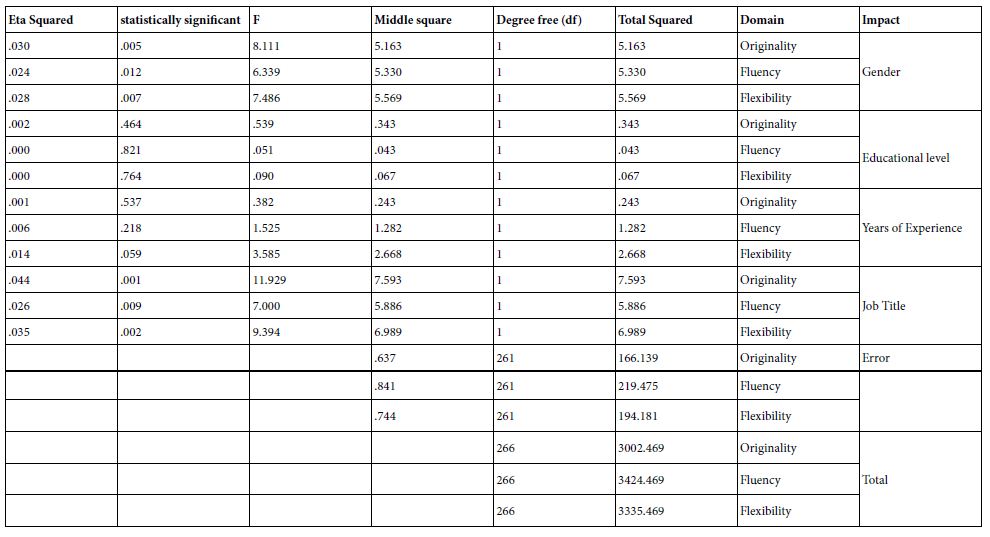
The results related to table (21) showed that there are statistically significant differences between the arithmetic means of the study sample’s estimates about the level of creativity of secondary school teachers in the three domains individually, due to the gender variable and in favor of females. Accordingly, the sex variable has a statistically significant effect that explains 3%, 2.4%, and 2.8% of the variation in the estimates of originality, fluency, and flexibility, respectively. And there are statistically significant differences between the arithmetic means of the study sample’s estimates about the creativity level of secondary school teachers in the three domains individually; Attributable to the job title variable, in favor of managers. Accordingly, the job title variable had a statistically significant effect that explained 4.4%, 2.6%, and 3.5% of the variation in the estimates of originality, fluency, and flexibility, respectively. While there are no statistically significant differences between the arithmetic means of the study sample’s estimates of the study sample’s estimates about the level of creativity of secondary school teachers in the three domains individually, due to the variables of educational qualification and experience.
To determine the statistical significance of the differences between the arithmetic averages of the study sample’s estimates about the level of creativity of secondary school teachers in the three domains combined (total), according to the intermediate variables, Four-way ANOVA was used, and Table (22) shows that (Table 9).
Table 9: The results of the quaternary analysis of variance for the comparison between the arithmetic means of the study sample’s estimates about the level of creativity of secondary school teachers in the three domains combined (total), according to the intermediate variables.

The results related to table (22) showed that there is a statistically significant difference between the two arithmetic averages of the study sample’s estimates about the level of creativity of secondary school teachers in the three fields combined (total), according to the gender variable, in favor of females, and explains 3% of the variance in estimates.
The results also showed that there was a statistically significant difference between the two arithmetic averages of the study sample’s estimates about the creativity level of secondary school teachers in the three domains combined (total), according to the job title variable, and in favor of principals, and explains 3.8% of the variation in the study sample’s estimates about the creativity level of teachers. Secondary schools in the three fields combined (total).
The results also showed that there were no statistically significant differences in the estimates of the study sample about the level of creativity of secondary school teachers due to the impact of the educational qualification and experience variables.
Discussion of the Results and Recommendations
This chapter deals with a discussion of the findings of the study, which aimed to reveal the degree to which secondary school principals in the northern region within Israel practice organizational conflict management strategies and their relationship to the level of creativity among teachers. It was organized in the light of its questions as follows:
Discussing the results related to answering the first question: “What is the level of creativity of secondary school teachers in the northern region inside Israel from the point of view of principals and teachers?”
To answer this question, arithmetic means, standard deviations, and rankings were calculated for the study sample’s estimates of the level of creativity of secondary school teachers in the northern region in Israel from the point of view of principals and teachers. The results showed that all domains came with an average degree, where the estimates for the field of flexibility came in the first place with a medium degree, and the estimates for the field of fluency came in the second place with a medium degree, and the estimates for the field of originality came in the third place with a medium degree, and the arithmetic average of the estimates of the study sample for the fields of creativity combined was a degree Medium.
The researcher attributes this result to the fact that flexibility, which means the ability to change the state of mind by changing the situation, and includes the diversity or difference of ideas that the creative individual brings, may have become an acquired skill for many teachers by virtue of technological progress, the spread of informatics, and the ease of obtaining information through the Internet. And others, which made it easier for teachers to diversify in using new creative methods, and move away from traditional methods, which were based on indoctrination, and follow inherited patterns in presenting information and presenting study materials, but the presence of some old teachers in particular, who still apply traditional methods, especially Which they experienced themselves, in addition to their lack of interest in modern technological means, make the estimates about the field of resilience come in an average degree. As for the arrival of the field of originality in the last rank, the researcher attributes it to the tasks that teachers have to accomplish at certain times, such as finishing courses and exam dates, which may lead teachers to rely on successful traditional methods and avoid applying new ideas.
This result agreed with the result of the study of Mazhar & Akhtar, 2018, which showed that the level of creativity of secondary school teachers in Lahore, Pakistan was average, and the result of the study of Adigüzel & Okçu, 2021, which showed that the level of creativity of teachers in secondary schools in Turkey was average. The result differed with the result of the study, whose results showed that the level of creative behavior among public school teachers in Israel was high, and the result of the study [22], which showed that the level of creativity among Indonesian secondary school teachers was high, and the result of the Qaddumi study [23], which showed that the level of creativity among teachers of outstanding students in public schools in Jordan was high, and the result of Al-Qahtani’s study, which showed that the level of Islamic education teachers’ practice of creative thinking skills in secondary schools in Kuwait was high, and the result of Al-Issa study, which It showed that the level of creativity among teachers in basic schools in Mafraq Education was high. The researcher discussed the areas of the creativity level of the teachers separately, as follows:
Domain of Flexibility
The results related to this field showed that the estimates of the study sample for the field of flexibility came in a medium degree, as paragraph No. (13) and its text “takes the initiative to adopt new ideas” came in the first place with a medium degree, while paragraph No. (12) came and its text “accepts unfamiliar job tasks” Ranked last, with a moderate degree. The researcher attributes this result to an awareness of the importance of flexibility in terms of acceptance of new ideas. Relying on old ideas may generate failure in managing the situation, or stereotypes in managing it, which may not produce acceptable results, given the changes in our contemporary world. What was previously acceptable may It is not acceptable at the present time, and what was strange in the past may seem familiar at the present time, and since the managers are often from the old generation, there are those who realize that there are new ideas that they may not have tested, so they accept and adopt those ideas, and there are those who insist On the old ideas that they lived and tested, a time here the estimates were average. While the researcher attributes the advent of Paragraph No. (12) in the last place to the great burdens and the many tasks borne by the principals and the school staff, which may be an obstacle in front of them in accepting unfamiliar tasks, which take them time and effort, and may not be feasible, and fraught with failure.
Domain of Fluency
The results related to this field showed that the estimates of the study sample for the field of fluency came in a medium degree, as Paragraph No. (16) and its text “Innovate solutions to deal with problems” came in the first place with a medium degree, while Paragraph No. (19) and its text “Avoids routine teaching methods Ranked last, with a moderate degree.
The researcher attributes this result to the commitment of teachers to the curricula prescribed by the Ministry, and setting tasks at specific times, which may constitute an obstacle for many in trying to devise solutions or new methods, whether in solving problems, or presenting the study material, and here the teachers resort to using methods that have been tested and tried, They avoid inventing new solutions, as their innovation in finding new solutions to deal with problems may be limited to what they have no previous experience in dealing with. As for the advent of Paragraph No. (19) in the last place, it can be attributed to the introduction of modern technological tools such as computers and the Internet, which made it easier for teachers to learn about new ways and methods of teaching that were not known to them before, and it can also be attributed to what the technologies provided. Modern materials such as films and interactive programs, which are easily accessible, and contribute to facilitating the work of the teacher.
Domain of Originality
The results related to this field showed that the estimates of the study sample for the field of originality came in a medium degree, as paragraph No. He answers questions in an unusual way” in the last rank and to a medium degree. The researcher attributes this result to the fact that originality, with what it means in terms of moving away from traditional ideas, and trying to find new creative ideas, a person must try to learn about the experiences of others first; This is so that he can get acquainted with their ideas and experiences, because the idea that comes to a person’s mind may have occurred to others before him, and they applied it, and they have sufficient information about the extent of its success or failure, and from here, if a person wants to implement a creative idea, he must first benefit from The experiences and experiences of others, and this is what is done through cooperation, advice and exchange of ideas between teachers, and since this matter may not always be possible; Because there is a difference in the nature of each subject, whether at the level of teaching, or to solve a problem or conflict within the institution due to the different personalities, circumstances and environment of each school, we find that the estimates were average. As for paragraph No. (3) coming last, the researcher attributes it to the ability of some to quickly find alternatives, which requires great intelligence and expertise.
Discussing the results related to the answer to the second question: Are there statistically significant differences at the level of significance (α=0.05) in the responses of the study sample about the creativity level of secondary school teachers in the northern region inside Israel due to the effect of the variables (Gender, educational qualification, experience, job title)?
The results related to this question showed that there was a statistically significant difference between the two arithmetic averages of the study sample’s estimates about the level of creativity of secondary school teachers in the three areas combined (total), according to the gender variable, in favor of females. The researcher attributes this result to the interest of female teachers in the fields of creativity more than that of male teachers. This is because male teachers have more preoccupations due to family, social and material pressures, which push many of them to search for jobs in addition to their work in school to provide material income that helps them bear the burdens of life, which reduces their time devoted to creativity in their profession as teachers. The reason can also be attributed to the fact that females have a greater ability to persevere and seek creativity than males who prefer to complete their tasks in haste, which reduces the degree of proficiency. The result differed with the result of Nasser’s study, which showed that there were statistically significant differences in the level of creative behavior among public school teachers in Israel due to the effect of the gender variable in favor of males, and the result of the Mazhar and Akhtar study [24], which showed that there was no Statistically significant differences in the level of creativity of secondary school teachers in Lahore, Pakistan, due to the effect of the gender variable, and the result of the Qaddumi study , which showed that there were no statistically significant differences in the level of creativity among teachers of outstanding students in public schools in Jordan due to the effect of the gender variable, and the result of Al-Qahtani’s study which showed that there were no statistically significant differences about the level of Islamic education teachers’ practice of creative thinking skills in secondary schools in Kuwait due to the effect of the gender variable, and the result of Al-Issa’s study, which showed that there were no statistically significant differences about the level of creativity of teachers in basic schools In Mafraq education, it is attributed to the effect of the gender variable, and as a result of the study of Adigüzel & Okçu , which showed that there are statistically significant differences in the level of creativity of teachers in secondary schools in Turkey due to the effect of the gender variable in favor of males [25-63].
The results also showed that there was no statistically significant difference between the two arithmetic averages of the study sample’s estimates about the level of creativity of secondary school teachers in the three areas combined (total), according to the variables of educational qualification and experience.
The researcher attributes this result to the fact that teachers of different academic levels and experiences seek creativity, and try to overcome the difficulties that impede the performance of their tasks, and therefore they try to use technological tools, discuss and exchange experiences, and try to apply all that is new in order to achieve creativity. The result agreed with the result of the Mazhar & Akhtar study=, which showed that there were no statistically significant differences in the level of creativity of secondary school teachers in Lahore, Pakistan, due to the effect of the educational qualification variable, and the result of Al-Issa study, which showed that there were no statistically significant differences. On the level of creativity of teachers in basic schools in Mafraq Education due to the effect of the educational qualification variable.
The result differed with the result of Nasser’s study, which showed that there were statistically significant differences in the level of creative behavior among public school teachers in Israel due to the impact of the educational qualification variable in favor of bachelor’s holders, and the result of the Qaddumi study, which showed that there were statistically significant differences. The level of creativity among teachers of outstanding students in public schools in Jordan is attributed to the effect of the educational qualification variable in favor of the “Bachelor” category.
The result also agreed with the result of the Mazhar & Akhtar study, which showed that there were no statistically significant differences in the level of creativity of secondary school teachers in Lahore, Pakistan, due to the effect of the variable years of experience, and the result of the Qaddumi study, which showed that there were no significant differences. Statistically, the level of creativity among teachers of outstanding students in public schools in Jordan is due to the effect of the variable of years of experience, and the result of Al-Issa’s study (2020), which showed that there were no statistically significant differences about the level of creativity of teachers in basic schools in Mafraq Education due to the effect of the variable of experience.
The result also differed with the result of Nasser’s study, which showed that there were statistically significant differences in the level of creative behavior among public school teachers in Israel due to the effect of the variable years of experience in favor of the “ten years and less” category, and the result of Adigüzel & Okçu’s study. , which showed that there are statistically significant differences in the level of creativity of teachers in secondary schools in Turkey due to the effect of the experience variable in favor of the category “more than ten years”. The results also showed that there was a statistically significant difference between the two arithmetic averages of the study sample’s estimates about the level of creativity of secondary school teachers in the three domains combined (total), according to the job title variable, and in favor of principals. The researcher attributes the presence of differences due to the job title variable in favor of the managers, perhaps because the managers have an interest in evaluating their workers, and therefore they care about the points of distinction and creativity and follow the teachers in this aspect; To be able to evaluate their subordinates fairly.
Recommendations
In light of the results, the study recommends the following:
- Encouraging principals to create a sound school environment free of conflict, due to its positive effects in increasing creativity among teachers, and holding training courses for principals and teachers within the school.
- Giving principals greater freedom in running the affairs of their schools, easing the burdens on teachers to increase their creativity, encouraging principals to exercise justice and shouldering responsibilities, and providing means of comfort for teachers so that they can devote more time to their work and school, and creativity in that.
- Providing technological tools in schools because of their impact on facilitating tasks, increasing creativity among teachers, improving their performance, and conducting more studies that look at creativity in other societies.
References
- Hamadneh B (2016) Level of Job Creativity among Learning Disabilities Teachers from Their Perspective in Kingdom of Saudi Arabia. Journal of Education and Practice 7: 40-46.
- Ciltas A (2012) The effect of the mathematical modeling method on the level of creative thinking. The New Educational Review 30: 103- 113.
- Abd al-Rahman, Abd al-Salam, al-Khatib B (2013) The extent to which teachers of the first three grades practice creative thinking skills from their point of view in UNRWA schools in Jordan. Journal of the Islamic University for Educational and Psychological Studies 21: 249-283.
- Tafvlin S (2013) The transformational leadership process antecedents Mechanisms, and outcomes in the social services. Sweden: Print & media.
- Arar K, Abu-Asbe K (2013) Not just location: attitudes and perception of education system administration in local Arab governments in Israel. International Journal of Educational Management 27: 54-73.
- Arar, Khaled, Al-Hajj, Qusai (2016) Palestinian Arab Education in Israel: Data, Dimensions and Prospects. Beit Berl: Publications of the Arab Academic Institute for Education, Academic College.
- Al-Omyan, Mahmoud Salman (2018) Organizational behavior in business organizations. Amman, Dar Wael for publication and distribution.
- Khairy, Osama (2012) Creativity and innovation management. Amman: Dar Al-Raya for publication and distribution.
- Ayoub, Nadia (2010) Factors affecting the innovative managerial behavior of managers in the Saudi commercial banking sector. Journal of Public Administration 1: 3-51.
- Philip H (2010) Using faculty evaluation to improve teaching quality: A longitudinal case study of higher education in Southeast Asia. Educational Assessment Evaluation and Accountability 22: 253-274.
- Al-Titi M, Abdah R, Jaradat M (2016) The role of principals of basic schools in developing creativity among teachers from the point of view of assistant principals. Journal of Al-Quds Open University for Educational and Psychological Research and Studies 4: 311-344.
- Majali M (2017) The role of school administration in developing creativity among computer teachers in Mafraq schools in Jordan from their point of view. Journal of Educational and Psychological Sciences 1: 226-241.
- Peters T, Waterman R (1982) In search of excellence: Lessons from America’s best-run companies. New York: Harper & Row.
- De Bono E (1970) Lateral thinking: A textbook of creativity. London: Ward Lock Educational.
- Al-Anazi, Saad (2014) Business Creations. Amman: Dar Al-Warraq for publication and distribution.
- Naser, R (2016) Level of Creative Behavior among Teachers of Public Schools within the Green Line from their Perspective. Journal of Education and Practice 7: 109-119.
- Al-Qahtani S (2019) The Level Of Islamic Education Teachers’ Practice Of Creative Thinking Skills Among Secondary School Students From Their Students’ Point Of View. Unpublished master’s thesis, Al al-Bayt University, Mafraq, Jordan.
- Marzuki A, Lampuasa S (2019) The Roles of School Principal Leadership in Developing English Teachers’ Creativities in Palu. Al-Ta’lim Journal 26: 267-279.
- Al-Issa I (2020) The Role Of Basic School Principals In The Upbringing Of Kasbah Mafraq In Developing The Creative Energies Of Teachers. Unpublished master’s thesis, Al al-Bayt University, Mafraq, Jordan.
- Adigüzel Z, Okçu V (2021) Investigation of the Relationship Between Perceived Organizational Climate and Teachers’ Levels of Organizational Creativity and Organizational Cynicism. European Journal of Education Studies 8: 25-41.
- Ziada, Huda (2021) The role of secondary school principals in the first Zarqa Education in providing the requirements of a culture of creativity from the teachers’ point of view. Unpublished master’s thesis, Al al-Bayt University, Mafraq, Jordan.
- Fitriah F (2018) The Role of Technology in Teachers’ Creativity Development in English Teaching Practices. TEFLIN Journal 29: 177-193.
- Qaddumi Faten (2019) Creativity among teachers of outstanding students in regular public schools and its relationship to some variables. Palestine University Journal for Research and Studies 9: 56-93.
- Mazhar S, Akhtar M (2018) Relationship between Knowledge Management and Creativity among Teachers of Public and Private Secondary Schools at Lahore. Bulletin of Education and Research 40: 91-104.
- Abu Osbeh I (2019) Principals’ management of work teams and its relationship to organizational conflict management from teachers’ point of view in Amman Unpublished master’s thesis, Middle East University, Amman, Jordan.
- Al-Abed M.(2019) The role of Islamic values in alleviating organizational conflict in Algerian health institutions. Journal of Studies and Research 11: 150-163.
- Al-Abyadh A, Al-Ruwaili S (2017) A study of some modern educational supervision patterns as perceived by teachers and their relationship to their self-motivation. Journal of Educational Sciences 9: 103-168.
- Al-Awameh O,Abdel-Nabi R (2019) Methods of managing organizational conflict and its impact on the administrative creativity of secondary school principals by applying it to secondary education schools in Zawiya, the center city – Libya. Journal of Colleges of Education 13: 379-411.
- Al-Dairi Z (2018) organizational behavior. Amman: Dar Al Masirah for publication and distribution.
- Al-Hait A, Abdel-Al S (2017) The impact of organizational conflict management strategies and the culture of empowerment on the elements of administrative creativity. Al-Balqa Journal for Research and Studies 20: 63-84.
- Al-Khudairi M (2010) Conflict Management: How to have full vitality and the necessities to stay active in today’s world. Cairo: Engineering House, Egypt.
- Al-Melady, Abdel M (2014) Gifted child and the development of intelligence and creativity. Alexandria: University Youth Foundation, Egypt.
- Al-Qahtani A,Al-Shahrani, F (2020) Conflict management and its relationship to organizational commitment among secondary school teachers in Khamis Mushait Governorate. Journal of Educational Sciences 5: 17-54.
- Al-Quraishi, Abdul Karim (2015) Five Strategies for Managing Organizational Conflict. Journal of Psychological and Educational Studies 14: 84-102.
- Andersen P, Guerrero L,Afifi W (2013) Close Encounters: Communication in Relationships. Los Angeles, Calif: Sage.
- Ayoub N.(2010) Factors affecting the innovative managerial behavior of managers in the Saudi commercial banking sector. Journal of Public Administration 1: 3-51.
- Bano H, Ashraf S,Zia S (2013) Conflict: Factors and Resolution Strategies Adopted by Administrators of Schools for Visually Impaired Students. Mediterranean Journal of Social Sciences 4: 405-408.
- Brown F (1983) Principles of educational and psychological testing. 3rd ed. New York, NY: Holt, Rinehart & Winston.
- Bryman A, Cramer D (1997) Quantitative data analysis with SPSS for Windows: A guide for social scientists. London, UK: Routledge.
- Cossin D,Caballero J (2013) Transformational leadership background literature review. IMD global board center.
- Cronbach, L (1951) Coefficient alpha and the internal structure of tests. Psychometrika 16: 297-334.
- Ferrer J (2020) Conflict management styles of secondary school principals and the relationship of organizational climate of the selected schools in Quezon City. European Academic Research 1: 5483-5503.
- Ghaffar A (2019) Conflict in schools: Its causes & management Journal of Managerial and Sciences 3: 212-227.
- Hadi S,Jawad H.(2019) Conflict Management According to the Thomas Model: An Exploratory Study in the Department of the Medical City in Baghdad. Journal of Arts, Literature, Humanities and Sociology 34: 247-266.
- Hammad Z (2019) The degree of effectiveness of organizational conflict management and its relationship to administrative empowerment among secondary school principals in Irbid governorate from the point of view of teachers, supervisors and principals themselves. Journal of the Islamic University for Educational and Psychological Studies 27: 603-631.
- Hareem H (2013) Behavior of individuals and groups business enterprises. Amman: Dar Al-Hamid for publication and distribution.
- Hussein S (2020) Management of organizational conflict in secondary schools from the point of view of faculty members. Iraqi University Journal 47: 446-460.
- Ibrahim T, Akbari S, Suaidah S (2022) Principal’s Behavior in Strengthening Teacher Innovation and Creativity During The Covid-19 Pandemic. Journal of Islamic Education Management 7: 116-124.
- Ilgan A (2020) Examining principals’ conflict management styles: a study of Turkish administrators. Bulletin of Education and Research 42: 1-16.
- Isik U, Sunay H,Cengiz R (2018) The Relationship between School Administrators’ In-House Communication and Conflict Management Strategies According to Physical Education Teachers’ Perceptions. Asian Journal of Education and Training 4: 266-271.
- Jaafara S (2013) Methods of managing organizational conflict and its relationship to administrative creativity among principals of public schools in Karak Governorate from their point of view. Studies, Educational Sciences 2: 1663-1687.
- Karimi A, Yektayar M, Nazari R, Mohammadai S (2013) Conflict Management Strategies of Sport Teacher and its Influence on Athletic Motivation of Schools in Gorgan City. European Journal of Experiment Biology 3: 420-424.
- Mahamid N.(2019) The degree of practicing organizational conflict management methods by middle school principals in the Northern Triangle region and its relationship to school performance from the teachers’ point of view. Journal of the Islamic University for Educational and Psychological Studies 27: 776-799.
- Mahasneh A,Al-Azmat O (2019) Conflict management strategies for school teachers in Qasaba Al-Mafraq district and its relationship to communication efficiency. The Jordanian Journal of Educational Sciences 15: 17-32.
- Mahasneh I (2013) Management and evaluation of job performance between theory and practice. Amman: Dar Jarir for publication and distribution.
- Momani, Wasel (2011) Organizational climate and conflict management in educational institutions. Amman: Dar Hamid for publication and distribution.
- Mthethwa J, Kutame A, Buthelezi A (2019) Female Principals And Conflict Management At Female-dominated Primary Schools In The Rural Areas Of Gingindlovu Circuit: The Perspectives Of Teachers. Gender and Behavior 17: 13585-13594
- Özyildirim G, Kayikçi K (2017) The Conflict Management Strategies of School Administrators While Conflicting with their Supervisors. European Journal of Education Studies 3: 1-20.
- Rahim M (2002) Towards a theory of organizational conflict. The International Journal of Conflict Management 13: 206-235.
- Saiti A (2015) Conflicts in schools, conflict management styles and the role of the school leader: a study of Greek primary school educators. Educational Management Administration & Leadership 43: 582-609.
- Shuwaihat S (2019) Methods of managing organizational conflict among principals of UNRWA schools in Jordan in the light of some variables. Studies Journal of Educational Sciences 46: 35-52.
- Tafvlin S (2013) The transformational leadership process antecedents Mechanisms, and outcomes in the social services. Sweden: Print & media.
- Yamane T (1967) Statistics, An Introductory Analysis. 2nd, New York: Harper and Row.
